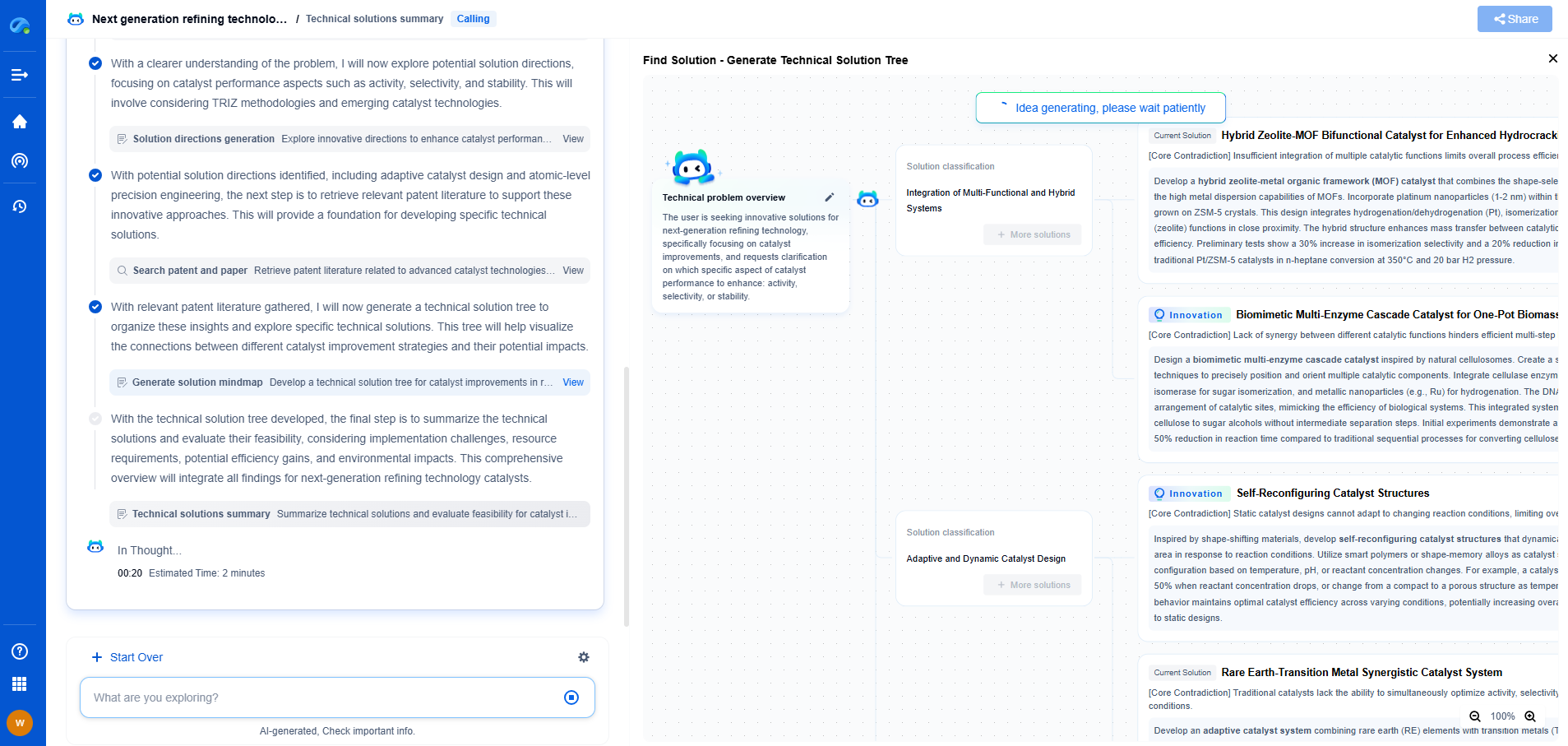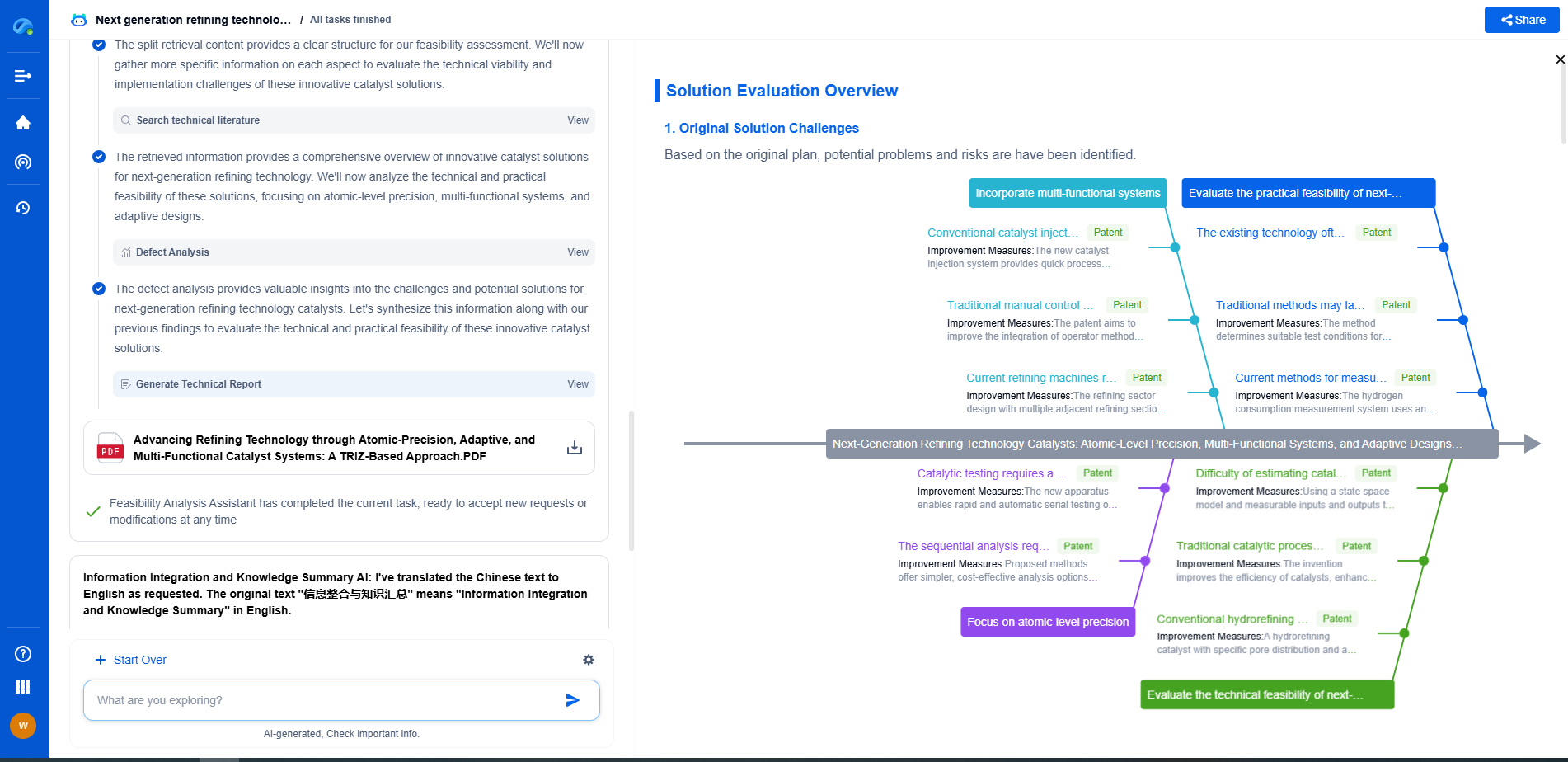Bayesian Neural Networks: Predicting Confidence Intervals for Medical AI
JUN 26, 2025 |
In the landscape of artificial intelligence, neural networks have become a cornerstone technology, enabling unprecedented advancements across various fields, including medicine. However, traditional neural networks often operate as "black boxes," where predictions are made without an explicit measure of uncertainty or confidence. This limitation is particularly critical in the medical domain, where decisions can have significant consequences. Enter Bayesian Neural Networks (BNNs)—a powerful tool that integrates Bayesian probability theory with neural network architecture, offering a structured way to quantify uncertainty and predict confidence intervals in AI-driven medical applications.
Understanding Bayesian Neural Networks
At their core, Bayesian Neural Networks incorporate principles from Bayesian statistics to improve the interpretability of neural networks. Unlike conventional neural networks that provide point estimates, BNNs offer a distribution of predictions. This is achieved by treating the network's weights as probability distributions rather than fixed values. As a result, Bayesian inference can be applied to update these distributions as new data becomes available, thereby capturing both model and data uncertainty.
The advantage of this approach in the medical field is clear: BNNs can provide not only the predicted outcome but also the confidence interval around that prediction. This adds a layer of transparency and reliability that is crucial for diagnostics, treatment planning, and patient risk assessments.
Applications in Medical AI
The application of Bayesian Neural Networks in medicine is multifaceted. One primary area is in diagnostic imaging, where BNNs can be used to predict the presence or absence of disease with associated confidence intervals. For instance, in radiology, a BNN might analyze medical images and predict the likelihood of cancer while also providing a confidence interval that reflects the uncertainty of the prediction. This can be particularly beneficial in cases with borderline or ambiguous imaging results, aiding radiologists in decision-making processes.
Beyond imaging, BNNs are also being explored for personalized medicine. By harnessing patient data, BNNs can predict individual responses to treatments, offering a range of possible outcomes rather than a single point estimate. This probabilistic approach allows for more tailored treatment plans that account for the inherent variability among patients.
How BNNs Enhance Medical AI
One of the key benefits of Bayesian Neural Networks is their ability to improve the robustness and safety of AI systems in medicine. By quantifying uncertainty, BNNs enable clinicians to understand the confidence level of AI predictions, which can be critical when making high-stakes decisions. This is especially important in scenarios where false positives or false negatives can have severe implications for patient care.
Moreover, BNNs facilitate better model generalization to new data, reducing the risk of overfitting to training data—a common pitfall in machine learning. This aspect is vital in the medical field, where data can be scarce, expensive to obtain, and subject to variability.
Challenges and Future Directions
While Bayesian Neural Networks offer significant advantages, they also present challenges that need to be addressed for widespread adoption in medical AI. One major hurdle is the computational complexity associated with BNNs. The process of inferring posterior distributions over network weights can be resource-intensive, requiring advanced algorithms and substantial computational power.
Additionally, integrating BNNs into existing clinical workflows demands careful consideration, particularly concerning data privacy, regulatory compliance, and clinician training. Future research is likely to focus on developing more efficient algorithms for BNNs, improving their scalability and accessibility in clinical settings.
Conclusion
Bayesian Neural Networks represent a promising advancement in medical AI, providing a mechanism to predict confidence intervals and quantify uncertainty. This capability is crucial for ensuring the safety and efficacy of AI models in healthcare applications. As research progresses and computational constraints are addressed, BNNs are poised to play a pivotal role in enhancing the reliability and transparency of AI-driven medical solutions, ultimately leading to better patient outcomes and more informed clinical decision-making.
Unleash the Full Potential of AI Innovation with Patsnap Eureka
The frontier of machine learning evolves faster than ever—from foundation models and neuromorphic computing to edge AI and self-supervised learning. Whether you're exploring novel architectures, optimizing inference at scale, or tracking patent landscapes in generative AI, staying ahead demands more than human bandwidth.
Patsnap Eureka, our intelligent AI assistant built for R&D professionals in high-tech sectors, empowers you with real-time expert-level analysis, technology roadmap exploration, and strategic mapping of core patents—all within a seamless, user-friendly interface.
👉 Try Patsnap Eureka today to accelerate your journey from ML ideas to IP assets—request a personalized demo or activate your trial now.
- R&D
- Intellectual Property
- Life Sciences
- Materials
- Tech Scout
- Unparalleled Data Quality
- Higher Quality Content
- 60% Fewer Hallucinations
Browse by: Latest US Patents, China's latest patents, Technical Efficacy Thesaurus, Application Domain, Technology Topic, Popular Technical Reports.
© 2025 PatSnap. All rights reserved.Legal|Privacy policy|Modern Slavery Act Transparency Statement|Sitemap|About US| Contact US: help@patsnap.com

